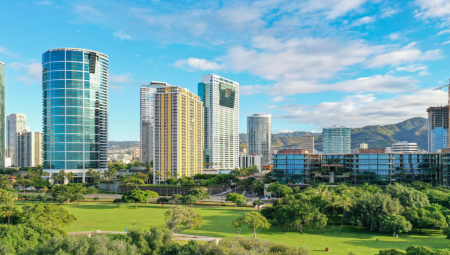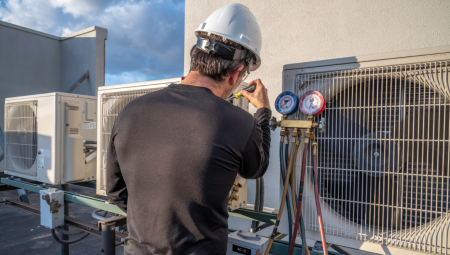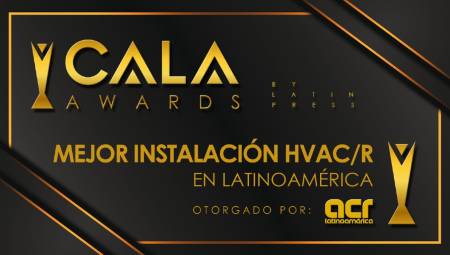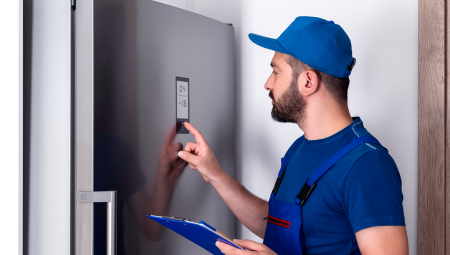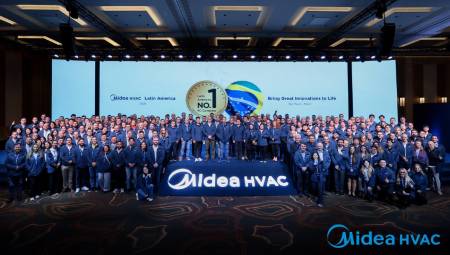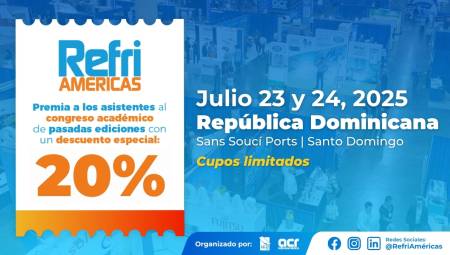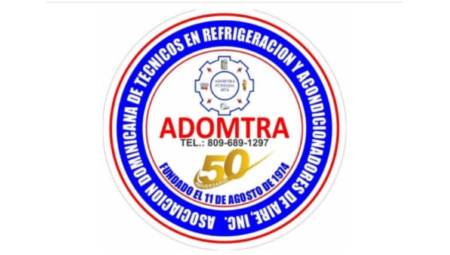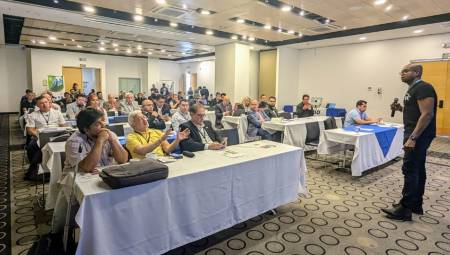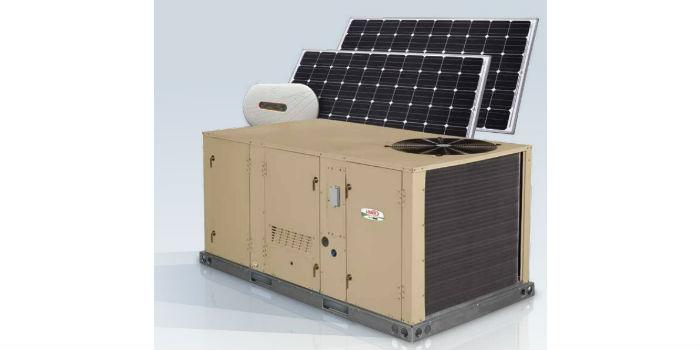 We interviewed Tad Sodergren, global sales manager of Lennox, to learn about the benefits of implementing high efficiency units and their influence on energy and money savings.
We interviewed Tad Sodergren, global sales manager of Lennox, to learn about the benefits of implementing high efficiency units and their influence on energy and money savings.
by ACR Latin America
Efficiency is still a term that catches everyone's attention and of which we want to have much more information, especially when the words savings, energy and operation are implicit there.
For that reason, we interviewed Tad Sodergren, Global sales manager of Lennox, who will talk about high-efficiency units in air conditioning systems.
ACR: What does it mean to have a highly efficient and energy-efficient unit?
Tad Sodergren: This is a question that can be answered in many ways, but let's see the easiest answer because it directly affects our pocket. Having a high efficiency equipment, say a machine of 16 seer or more, you can have a saving of 65%. Where many people get confused is in that saving. For example, in a normal home in the United States, Air Conditioning consumes about 50% of total consumption: Lights 11%, Water Heater 8%, Appliances (Orno, Stove, and Microwave) 7%, Computer 7%, refrigerator 7%.
Looking at these consumptions it is natural that the largest investment is spent on the largest consumer, which would be the Air Conditioning. But we found that people prefer to buy cheap low-efficiency equipment instead of investing their money in Air Conditioning. Because- A 60" 4k TV costs about $2,000 to $3,000. However I see people buying them with their eyes closed. Because the effect is seen - the visit sees it. The Air Conditioning does not see it, cools but does not analyze where the consumption is. And already after about three to four months they are forgotten.
We must also say that lowering consumption is directly affecting or better helping the total consumption of the city, county, state, or country. Which if the power plant is oil and coal has a direct impact on the environment. So it's not only helping your pocketbook but it's helping the environment.
ACR: What is the difference or impact when a company decides to use high-efficiency units?
Tad Sodergren: In a company it's very similar, with the exception that they can't turn off the air conditioner to save money and open the windows. Customers or employees depend on a comfortable environment to do their shopping or work. Example if you have two stores next to each other with similar product. Tent 1 – the air does not work well and the atmosphere is not very good. The second store works very well and the customer is very comfortable.
It is proven that in an area that has comfort, customers tend to spend more time walking in the store and in turn spend more money.
ACR: How does this affect the final amount of the company? Why is it worth the investment?
Tad Sodergren: Any drop in Operating Cost is directly reflected in the final amount. That's why we see LED lights in chain stores like Wal-Mart, Costco etc. Ultra High Efficiency units are being used in stores today. I give you an example: if we analyze a store that has about 22,000 square feet needing 660,000 btuh's and make a comparison of operating costs with a machine with standard efficiency against high efficiency units, it would be three machines of 20 tons. We have savings the first year of about $4,342.00. In the first 5 years it would be US$23,052.00, 10 years it would be US$49,776.00. etc. Many times the saving is much more than the difference in investment.
ACR: What are examples of products or units that are energy efficient?
Tad Sodergren: The trend today is that everything that is the inverter is efficient and that is true and at the same time not. The condenser motor was to be variable, this motor helps to make the unit efficient because it also reduces while the compressor reduces; allowing the unit to stay on longer at a lower capacity to maintain the same ambient temperature.
And if we take this unit and now place solar panels to supply the condensing unit this would work as a hybrid where we could use solar and service, which would lower consumption much more in the day. We have units where you can use an economizer that basically allows colder air from the outside through an air intake into space. This is usually sold in areas that are colder at night. Example: Bogotá, Medellín, Lima.
An economizer allows the evaporator motor to run with all compressors turned off, which gives you a benefit of high efficiency and fresh air replacement. In these areas specifically you can save up to 60% consumption.
We also have VRF, a fashionable technology but one that has been used since 1980. And it is efficient if it is designed correctly. This unit is designed for areas such as offices, small hotels, movie theaters, basically anywhere that has many spaces to cool to different temperatures and in other areas you do not need to cool. This unit can be adapted to the necessary capacity at different temperatures at the same time.
The inefficiency of this unit is seen in the design and installation. This unit cannot be installed in all applications because if it works at 100% it does not use the maximum efficiency of the unit well and becomes inefficient.
ACR: How long does it take for a company to adapt and use energy efficiency?
Tad Sodergren: This is hard to say, you need to look at the running cost rather than the initial cost. A very efficient unit can be 30-40% more expensive. But in the life of the unit, which can be from 10 to 15 years, you can save much more than the difference. The buyer's mindset has to change about how much it costs and how much it consumes, and then analyze costs.
ACR: What is the cost of a company to adapt and use energy efficiency?
Tad Sodergren: I repeat, this is about 30-40% more but there are many factors in this: If a compressor works at a lower capacity to maintain the same space the life of the compressor is extended. We are seeing warranties on compressors of ten years where not so long ago it was 1 year. Electric motors also last longer, so although a unit costs more it is also lasting longer. Which also means fewer repairs. They have to understand that in today's world and with the technologies we have, they must start looking for efficiency and not initial cost.
ACR: What are the savings, both financial and energy?
Tad Sodergren: If we look at a store of about 22,000 square feet. Needing 660,000 btuh and we make a comparison against a unit of 10 IEER against high efficiency; we can see savings in the first year in operating cost of $4,342.00. The first five years we see a saving of 23,052.00 dollars which is approximately a saving of 65%, in ten years we see again 49,776.00 dollars which is approximately a saving of 65%. But knowing that the difference is in dollars of 13,821 but about three years they will recover the difference. The rest is just savings.
ACR: How does this help customers?
Tad Sodergren: If we look at Colombia as an example, the government has had to intervene and put efficiency mandates in place. Why? A simple answer is that the customer or end user of commercial buildings or homes did not see the value of reducing consumption, so the government had to intervene because of population growth. Economically the country is doing well.
I like to jokingly say that people who had a fan, can now buy a window unit, the person who had a window unit can now buy a Mini Split and so on. This means that the market does not control itself and buys the idea of reducing electricity consumption. The government is obliged to intervene and put requirements that force the consumer to buy high efficiency to reduce the overall consumption that directly affects the production of energy that is needed in the country.
ACR: Which countries have already adopted energy efficiency units?
Tad Sodergren: I think Colombia has adopted it in some sectors where energy is so expensive, that they have no choice. Countries like Panama have been buying high-efficiency units for many years, in fact I think it's one of the countries where we sell high-efficiency units the most. Many say it's because foreigners are going to retire in Panama; and because in the United States we are always thinking about reducing operating costs. This has been passed on to people over the years.
ACR: What are the applications of energy-efficient products?
Tad Sodergren: This is hard to say really since it depends on each application and use. All the lights in my house are LED, they produce the same amount of light with 1/3 of the energy, in the water heaters it is instantaneous only turns on when the need for hot water arises. Computers shut down when not in use, especially monitors. I even drive a hybrid. There is a real reason why the energies we use today are called non-renewable. Already after consuming everything does not exist anymore. So to extend the time of this energy we must reduce our consumption.
ACR: Is this technology for commercial only?
Tad Sodergren: Offices, commercial buildings, hotels, theaters and in our homes. If we all do our part we can help lower energy waste and allow time for technology to advance and find the right energy to use. A renewable energy such as solar, wind, hydroelectric, geothermal and biofuels. But if we consume it all we will not find the solution before we run out of energy.





